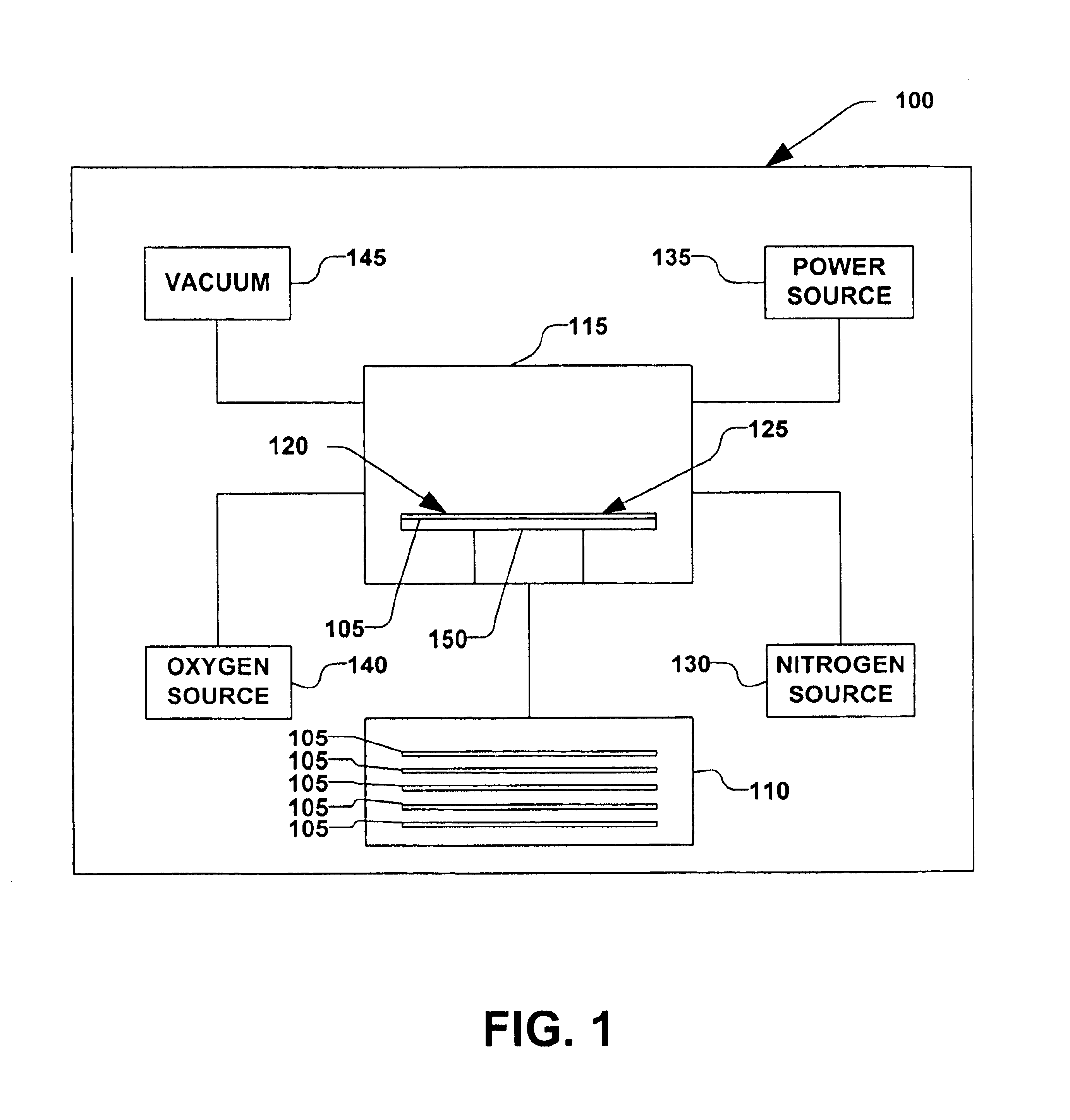Method for removal of hydrocarbon contamination on gate oxide prior to non-thermal nitridation using "spike" radical oxidation
a technology of hydrocarbon contamination and gate oxide, which is applied in the direction of basic electric elements, electrical equipment, semiconductor devices, etc., can solve the problems of inadvertent non-uniformity, gate leakage current non-uniformity, so as to prevent the oxidation of the gate dielectric layer.
- Summary
- Abstract
- Description
- Claims
- Application Information
AI Technical Summary
Problems solved by technology
Method used
Image
Examples
Embodiment Construction
[0016]One or more exemplary implementations of the present invention will now be described with reference to the attached drawings, wherein like reference numerals are used to refer to like elements throughout. It should be understood that the description of these aspects are merely illustrative and that they should not be taken in a limiting sense. In the following description, for purposes of explanation, numerous specific details are set forth in order to provide a thorough understanding of the present invention. It will be evident to one skilled in the art, however, that the present invention may be practiced without these specific details.
[0017]The present invention is generally related to a method for processing a semiconductor wafer, wherein an amount of hydrocarbon contaminants residing on a surface of the wafer are significantly reduced. More particularly, the present invention relates to an improved method of forming a gate dielectric layer, wherein hydrocarbon contaminant...
PUM
 Login to View More
Login to View More Abstract
Description
Claims
Application Information
 Login to View More
Login to View More - R&D
- Intellectual Property
- Life Sciences
- Materials
- Tech Scout
- Unparalleled Data Quality
- Higher Quality Content
- 60% Fewer Hallucinations
Browse by: Latest US Patents, China's latest patents, Technical Efficacy Thesaurus, Application Domain, Technology Topic, Popular Technical Reports.
© 2025 PatSnap. All rights reserved.Legal|Privacy policy|Modern Slavery Act Transparency Statement|Sitemap|About US| Contact US: help@patsnap.com



